Cultivating Defiant Compassion for an Uncertain Future
By Benjamin Vogt
The following excerpt is adapted from Benjamin Vogt’s book A New Garden Ethic- Cultivating Defiant Compassion for an Uncertain Future (New Society Publishers September 2017) and is reprinted with permission from the publisher and the author.
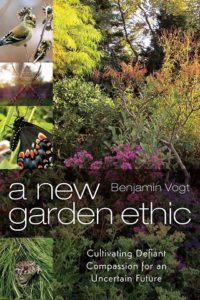 The loss of overall biodiversity, based on the number of genetically unique ecological niches, is our largest threat to a livable world, for the very reason that it provides redundancies or safeguards for the health and evolution of our planet. We don’t know what small, out-of-the-way creature may already be or may become an important part of some larger plan. Take, for example, the meltwater stonefly in Glacier National Park, a place that since 1850 has seen 85 percent of its glaciers erased and will be completely ice-free by 2020. The fly lives in a very specific niche: the freezing cold water coming off glaciers. Over the summer, stoneflies move upstream to find the coldest conditions, and as they do so, mini populations become separated from one another. A group or even an individual that might be adapting to warmer conditions downstream can’t interact, or share its genes, with the larger groups moving upstream. Will the loss of this seemingly innocuous species be more telling down the road, or will we let it be telling right now? What are we risking when we lose even the smallest species?
The loss of overall biodiversity, based on the number of genetically unique ecological niches, is our largest threat to a livable world, for the very reason that it provides redundancies or safeguards for the health and evolution of our planet. We don’t know what small, out-of-the-way creature may already be or may become an important part of some larger plan. Take, for example, the meltwater stonefly in Glacier National Park, a place that since 1850 has seen 85 percent of its glaciers erased and will be completely ice-free by 2020. The fly lives in a very specific niche: the freezing cold water coming off glaciers. Over the summer, stoneflies move upstream to find the coldest conditions, and as they do so, mini populations become separated from one another. A group or even an individual that might be adapting to warmer conditions downstream can’t interact, or share its genes, with the larger groups moving upstream. Will the loss of this seemingly innocuous species be more telling down the road, or will we let it be telling right now? What are we risking when we lose even the smallest species?
Changes in ecosystems due to rising temperatures also affect other organisms like cottonwood trees, specifically individual genotypes; distinct cottonwoods can support seven hundred insect species as well as other life forms such as beavers, bacteria, lichen, and soil microbes, so the loss of a genetically unique population of cottonwood trees could have an unpredictable cascade effect. And this is just one tree. What other effects will be felt due to the loss of ice and a warming of the climate? What species or ecosystems will exist one day and be gone the next simply because we are heating our homes and driving to the big-box store and buying new clothes?
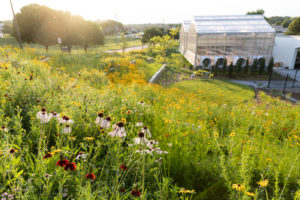
Bellevue University native gardens.
Overall, species that have the lowest level of genetic diversity will get hit the hardest by climate change, unable to adapt or evolve over any period of time. The places where such genetically invariable species live generally have fewer organisms because the conditions there are already so harsh -like the cold, icy streams that the meltwater stonefly calls home. Those species are called “restricted endemics” and tend to live in one of 35 global biodiversity hotspots, places with 1,500 or more native species but only 30 percent or less of habitat remaining.
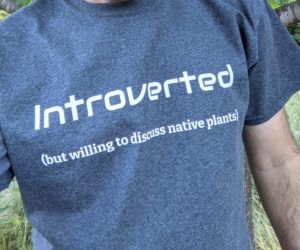 Loss of habitat can be partially overcome if species are able to move and share their genetic material. Diverse and linked ecosystems that allow migration are crucial, acting as a climate change buffer by helping as many species as possible adapt, even if their numbers are relatively low. These ecosystems may better withstand climatic swings while providing all sorts of ecosystem services like mitigating floods, sequestering carbon, and reducing disease. An analysis published in Science authored by scientists from 14 countries found that dryland ecosystems are the most threatened. They cover 40 percent of the Earth’s surface and support 40 percent of the human population, but are particularly vulnerable to environmental changes and desertification.
Loss of habitat can be partially overcome if species are able to move and share their genetic material. Diverse and linked ecosystems that allow migration are crucial, acting as a climate change buffer by helping as many species as possible adapt, even if their numbers are relatively low. These ecosystems may better withstand climatic swings while providing all sorts of ecosystem services like mitigating floods, sequestering carbon, and reducing disease. An analysis published in Science authored by scientists from 14 countries found that dryland ecosystems are the most threatened. They cover 40 percent of the Earth’s surface and support 40 percent of the human population, but are particularly vulnerable to environmental changes and desertification.

Beautiful and dynamic zero lawn front yard.
Another report that appeared in Nature goes even further. The findings show that, within two years after a significant climate event that disturbed the environment (floods, drought, etcetera), low-diversity communities with just one or two plant species experienced a productivity loss of so percent, while high-diversity communities of 16 to 32 species changed only by 25 percent. The conclusions are that biodiversity stabilizes an ecosystem and lessens swings in ecosystem services. In an uncertain future, it would seem maintaining biologic diversity that works together in a tight-knit system is paramount, and that coevolved biodiversity would be the most resilient.
With unpredictable and more intense climatic swings induced by higher concentrations of greenhouse gasses, biodiversity can do more than buffer the loss of wildlife or the threats of extreme weather events. When the USSR collapsed, communal farming systems collapsed with it. This led to farmers heading for cities to find work, abandoning 110 million acres of farmland that then went wild. What at first glance appears to be large-scale human failure actually turns out to be an environmental success, as the vegetation now growing on those fields absorbs so million tons of carbon each year or roughly 10 percent of Russia’s annual carbon emissions.
Soil is an amazing carbon sink, and we are learning how to increase carbon storage in traditional agriculture through methods such as crop rotation and buffer strips of prairie. Yet new research points to the fact that our soils might not be as good at storing carbon as we once hoped. Data from Northern Arizona University shows that while increased levels of atmospheric CO2 will promote more photosynthesis and plant growth, thereby increasing the potential to absorb CO2, increased soil carbon may also spur microbes to produce CO2, as they break down that carbon. The estimates are that higher levels of CO2, in the air will increase plant-based carbon sequestration by 20 percent, but that soil microbes will put back 16.5 percent of that CO2, into the air. Uncertainty, though, is our new future. How can we be certain how the world will respond to our increasing pressures upon it? How can we be certain what oceans, soils, and plants will do? We are not even certain what’s being lost–though as with climate change, we do have a pretty good idea.
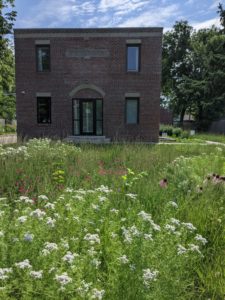
Commercial building planted in with a prairie.
Plants and animals disappear all the time. Evolution works this way, and we are likely to have never had the good fortune of knowing many of those extinct species. Maybe they were naturally outcompeted, succumbed to a disease, or evolved into a new form. But the background extinction rate, that level at which species are naturally erased, is far lower than currently observed rates. One international study, led by Gerardo Ceballos of the Instituto de Ecologia in Mexico, used as a baseline rate two mammal extinctions per 10,000 species per 100 years, a rate twice as high as is commonly used. The authors then compared this rate to conservative estimates of the current rate of vertebrate losses over the last century, finding those losses to be 100 times greater than the background rate. Previous estimates suggest that the number of species should have taken anywhere from eight hundred to ten thousand years to vanish. Just in the islands of Oceania, up to 1,800 bird species have been extirpated since human contact some two thousand years ago. In the end, for every degree of global temperature rise, we can expect a 3 percent rise in species extinction, and may face a 16 percent species loss or more by the end of the century.
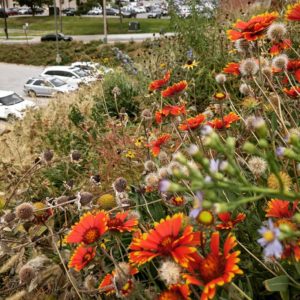
UNMC parking lot prairie.
What these many studies add up to is this: the world has lost one-tenth of its wilderness in just the last 20 years. That’s an area the size of Alaska. There are still 11.6 million square miles of relatively intact wilderness left in the world, mainly in northern Asia, northern Canada, and North Africa – all places fairly inhospitable to humans to this point. But there’s wildness in other places, too. Aquatic life may be the most threatened of all as more carbon is absorbed by oceans, acidifying them and lowering oxygen levels. Acidification is currently accelerating faster than it has in the last 300 million years or the period that marked the Permian extinction when 95 percent of ocean life was lost; then, it took 30 million years for the oceans to recover. Remember that rate of CO2, released into the atmosphere of 30 gigatonnes per year? That’s a rate 10 times faster than 300 million years ago. Sure, life will recover, new species will emerge and evolve- but how many of us will be around in tens of millions of years to enjoy the falsely comforting prediction that “life finds a way”?
The entire world is now a garden–a space altered by human influence–and this understanding creates some stark realities in how we rethink the most intimate places we inhabit and are exposed to every day: our suburban lots, our urban roadways, our parks and schoolyards. While we are causing biodiversity loss in mammals, arthropods, and more, it’s incumbent upon us to follow the food chain and understand how natural systems work, what life up and down the trophic level needs to thrive and adapt, and what we can do about it. That’s where exploring the issues surrounding plants comes in.
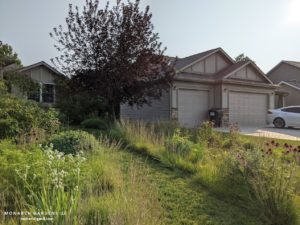
Suburban Front Yard planted for biodiversity.
The news on plants isn’t rosy, but if organisms that use plants are in trouble, then it makes sense that the further down the chain you go, the more precarious the situation becomes. We know of roughly 390,000 plant species, with around 2,000 being discovered every year. As with animals and insects, we aren’t likely to fully know their functions or how they interact with their environments. It takes a lot of time and money to quantify ecological function for any one organism. The UK’s Kew Royal Botanic Gardens recently revealed in its State of the World’s Plants that at least one-fifth of global plant species are at risk of extinction due to a perfect storm of habitat loss, disease, and invasive species-all exacerbated by climate change. This threat of extinction is one reason why biologist E. O. Wilson proposes his “Half-Earth” idea– the goal of setting aside 50 percent of the most biodiverse areas on Earth and essentially leaving them free to their own devices to adapt and evolve.
In his book Plant Conservation: Why It Matters and How It Works, Timothy Walker makes several startling claims, one of which is that by 2050 we may have lost almost 30 percent of all global plant species. Such loss begs the question: which of these plant species could have cured cancer, or Alzheimer’s, or given us the clues to cleaner energy? One hundred years from now, only 8 percent of currently protected lands–refuges and the like- – will be in the right place to conserve species who use them, as climate change forces species uphill and to the north to find their coevolved niches. Some 276 of our national parks are experiencing spring weeks ahead of schedule, which might require us to expand or move their boundaries to protect wildlife.
Built landscapes play a complicated if not deleterious role in the environment. According to Walker, private and botanic gardens are in fact the number one threat to biodiversity due to the potential release of invasive plants: this claim, though radical, is essential. How do we know if or when a plant from another region will become invasive? How do we know what the interactions will be above and below the soil line? Or how such a plant will become a part of its larger environment, for good or ill? If we know so very little about the life in our world, how can we presume that our garden plant choices are right just because we think they are pretty, make us happy, or foster some sense of human freedom? We desperately need to more critically question our choices and beliefs. In fact, we need to go even further and directly challenge our beliefs in order to test our assumptions about them.
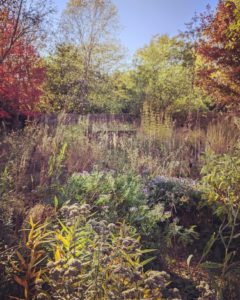
Suburban backyard bursting with color and textures in fall.
Plants escape gardens and alter environments from the soil on up. Invasive plants contribute to even greater biodiversity loss and complete ecosystem alterations that might take millions of years to rebalance. Our current, relatively easy lifestyle has been given to us by several layers of biotic redundancy–meaning, the planet can take a licking and keep on ticking… to a point. And we may be at that point where the Goldilocks era of our planet is over: a perfectly balanced moment in time that has seen the greatest number of species working in highly functional equilibrium. It’s that equilibrium which has helped our diverse human cultures develop and flourish.
With the above information in mind, it’s clear that a changing climate, caused by humans, is going to have deep and powerful repercussions on biodiversity, adaptability, and health. We don’t know what we’re doing, and even if we did know down to the letter, would that spur necessary change? If we knew, without a shadow of a doubt, that specific native plants in our region were performing a plethora of specific ecosystem services, would we be more careful to use those plants in place of others? If we all knew how important our garden landscapes were to wildlife soil remediation, water and air purification, and our own health, would we demand far more from our designers and contractors? Would we become a more integrated and humble part of the way the world functions? Would we reshape our economy and government as a result?
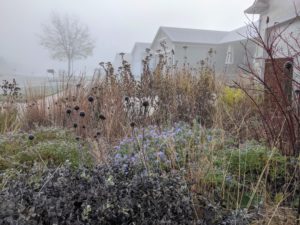
Moody image of front yard creates lots of habitat and visual interest.
Statistics may sway those of us who chink analytically and prize scientific inquiry, but not necessarily those who go more by emotions and instinct, by in-the-gut daily interactions with life around them. And when that life, that wildness, is absent or diminished, what emotional connection can we have beyond those we have with our children, our domesticated pets, and a few resilient or opportunistic birds, rodents, and butterflies? Sometimes statistics and research are just a way to discuss a subject by avoiding it. We know what’s wrong, what’s at stake, even without every last shred of analysis. Those statistics may simply be a way to carefully delay the emotional pain and trauma that will predicate our necessary outward changes. We certainly know that native plants, in their wild environments and in the cultivated wild of the urban and suburban areas, are critical components to our wellbeing. Maybe we don’t put enough faith in the wisdom and order of systems that are more in sync and balanced than we’ve become. We don’t have to use native plants-we make a choice when we do or don’t use them–but in that decision resonates our depth of empathy and compassion, as well as our own ability to adapt and evolve.
About the Author
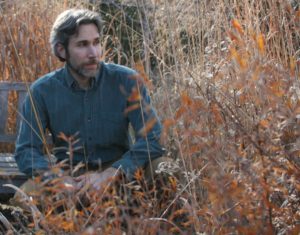 Benjamin Vogt owns the prairie-inspired design firm Monarch Gardens, based in Lincoln, Nebraska. His gardens have appeared in The American Gardener, Fine Gardening, Garden Design, and Midwest Living. Benjamin is the author of the forthcoming Prairie Up: An Introduction to Natural Garden Design and A New Garden Ethic: Cultivating Defiant Compassion for an Uncertain Future.
Benjamin Vogt owns the prairie-inspired design firm Monarch Gardens, based in Lincoln, Nebraska. His gardens have appeared in The American Gardener, Fine Gardening, Garden Design, and Midwest Living. Benjamin is the author of the forthcoming Prairie Up: An Introduction to Natural Garden Design and A New Garden Ethic: Cultivating Defiant Compassion for an Uncertain Future.
***
Each author appearing herein retains original copyright. Right to reproduce or disseminate all material herein, including to Columbia University Library’s CAUSEWAY Project, is otherwise reserved by ELA. Please contact ELA for permission to reprint.
Mention of products is not intended to constitute endorsement. Opinions expressed in this newsletter article do not necessarily represent those of ELA’s directors, staff, or members.

